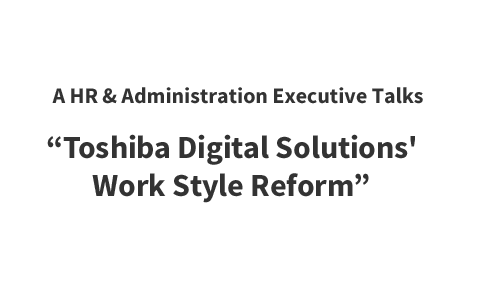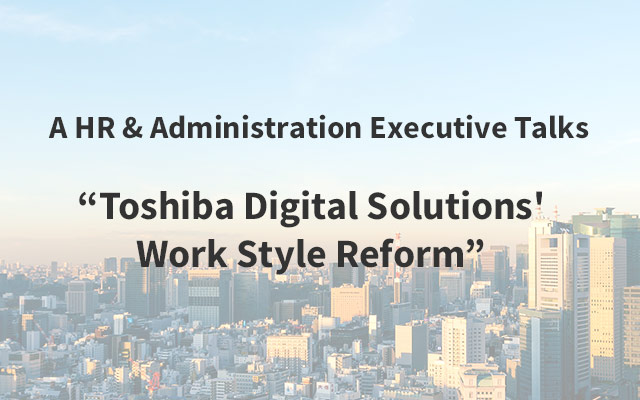
- Vol.
- 33
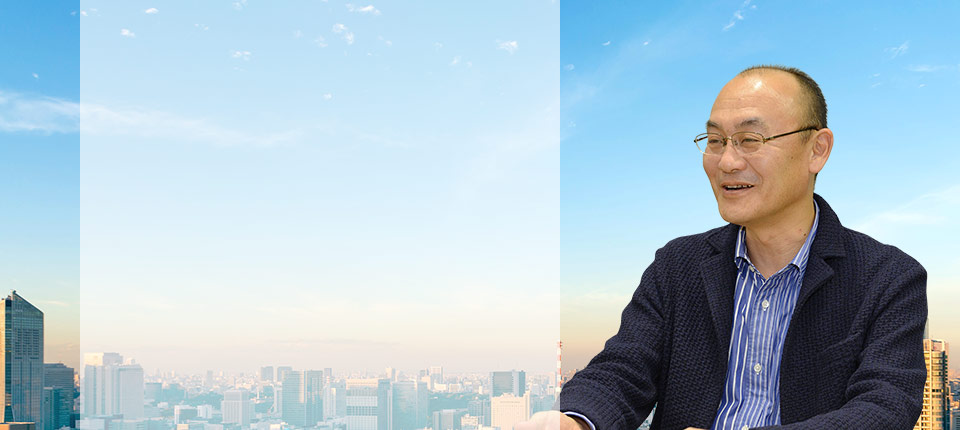

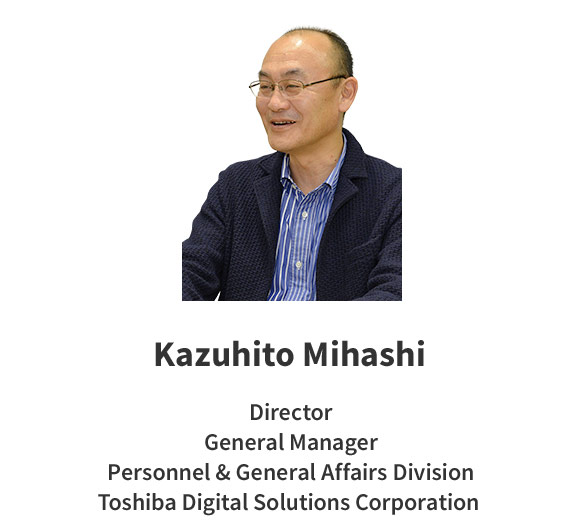
Why is the Toshiba Group taking on the work style reform? The Toshiba Group is striving to become one of the world's leading Cyber-Physical System (CPS) technology companies. To accomplish this, it believes it needs to have a work environment in which employees with various backgrounds can thrive and feel job satisfaction. Toshiba Digital Solutions, a group company that specializes in the use of ICT, is working on pioneering the work style reform. Its objectives are to promote the autonomy and initiative of each and every employee, improving both company engagement and work motivation. "Transforming from a working company to a company hoped to work for." This article introduces the work style reform being implemented by the Toshiba Group and Toshiba Digital Solutions.
 Toshiba Group’s efforts toward working styles 10 years from now
Toshiba Group’s efforts toward working styles 10 years from now
How will people work ten years from now? According to the Future of Work: 2035, issued in 2016 by the Ministry of Health, Labour and Welfare, the Revised Labor Standards Act enacted in April 2019, and the Part-Time/Fixed-Term Employment Act, enacted in April 2020, in the future, the following work style and workplace environment changes will become commonplace: large-scale work style changes (freedom from fixed hours and locations), the elimination of seniority systems, corrections to employment inequality between regular and non-regular employees, widespread engagement in side jobs, project-based work styles, widespread collaboration with other business people around the world, and an increase in people making a living by doing what they enjoy.
In "Toshiba Next Plan," the Toshiba Group has declared its intent to become one of the world's leading Cyber-Physical System (CPS) technology companies. To accomplish this, it will require work environments that bring together people with diverse backgrounds, brimming with a desire to energetically engage in satisfying collaborative work. In other words, the Toshiba Group needs to be at the forefront in creating the work styles of the future. This is why the Toshiba Group is actively driving the work style reform.
What kind of reform is the Toshiba Group considering and implementing? Toshiba Digital Solutions works on pioneering the work style reform from the three vantages of processes, technologies, and culture. It is implementing diverse initiatives based on each of these (Fig. 1).
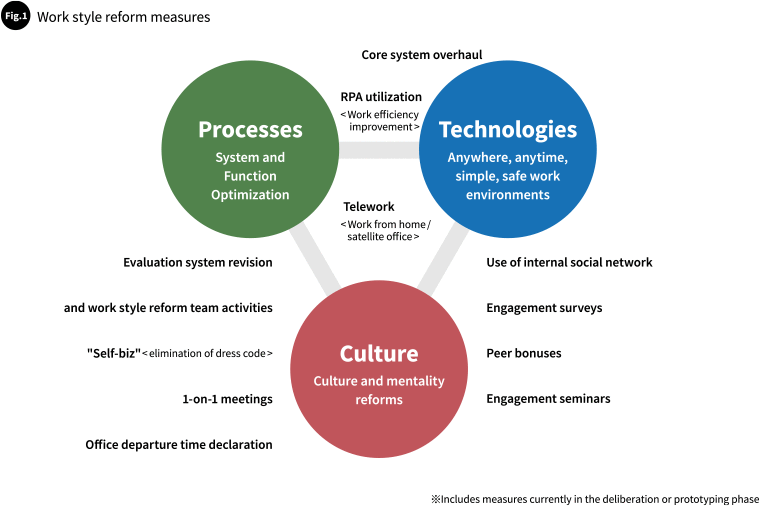
We will introduce a few examples of these initiatives.
Let us begin with the first initiative area, processes. The first thing we'll introduce is telework, in which employees work from home or a satellite office. In 2017, Toshiba began a home-teleworking pilot test, and in 2019 launched an official home-teleworking system.
In order to promote efficient work styles that match actual employee conditions, this system does not place universal restrictions such as limits on the number of times the system can be used each month. Each department flexibly operates the system as best fits their particular operations.
We have also concluded contracts with satellite office providers throughout Japan, and began offering satellite office service from July 2019. There are also satellite seats in every Toshiba Group site. This increase in the number of places where work can be performed, and the capacity at each location, enables employees to use their time effectively when outside the office, such as when on business trips.
As the result of our promotion of working from home and using satellite offices, currently approximately half of our roughly 4,000 employees perform telework. This is measure is one example of large-scale work style changes (freedom from fixed hours and locations).
We have also revised our human resource compensation system and introduced a job rank system. As the population continues to age, we modified our compensation system to allow even more diverse employees to thrive. These include seniors, the younger generation of employees that will one day be the heart of the company, and mid-career hires whose skills and experience can be put to immediate use. Together with these revisions, we also wish to promote “diversity and inclusion”, making work rewarding for all employees, and to invigorate our corporate culture.
As it becomes more commonplace to have second jobs, we have carried out a second job trial run as a pilot test for the Toshiba Group. This will help increase the number of people making a living by doing what they enjoy. We are preparing opportunities for employee self-actualization and growth so that we can become an even more attractive company for our employees.
The next initiative area is technology. There are a wide variety of operations to facilitate corporate activities.
First, we took inventory of what these operations consisted of, and then implemented measures such as making operation process improvements, deploying RPA*, and introducing an internal social network. Of course, it was also vital that we prepared the IT tools used to accomplish this. We are leveraging the knowledge we have accrued over the years as a system integrator, using technologies such as mobile device technologies and security technologies, and striving to improve productivity without sacrificing safety.
These are also important in telework, so we are currently building a new network environment.
- *RPA:
- Robotic Process Automation
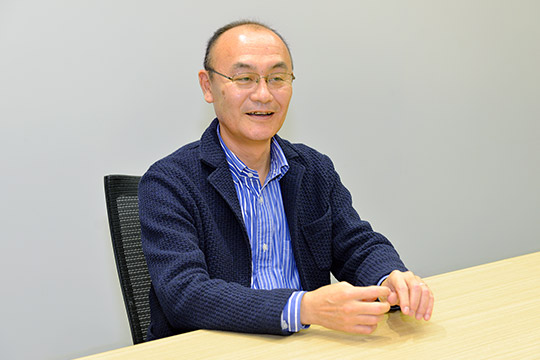
 Introducing engagement surveys to assess employee and organization conditions in real time
Introducing engagement surveys to assess employee and organization conditions in real time
The third initiative area is culture.
The true objective of our work style reform is to promote the autonomy and initiative of each and every employee, improving both company engagement and work motivation. To implement these measures, we created a Work Style Reform Project, consisting of our HR & Administration Department and management class personnel within our company. First, the project reviewed and made changes to the current work styles of employees. It improved production efficiency and reduced total work times.
Then various new initiatives were launched to use the time that was freed up effectively, such as performing high value added work or improving personal skills.
In October 2018, we created a Young Employee Task Force, consisting of young members of the Work Style Reform Project in business departments and development centers, to explore these potential initiatives. The members of the task force freely shared opinions and recommendations about improving productivity and making work more rewarding, such as what the task force itself could do and what requests it should make of the company. The task force is working to foster an interest among young employees in company systems and measures as things that directly affect and involve them, so that they actively contribute to improvements.
The Young Employee Task Force comes up with new ideas from a different perspective than the rest of the Work Style Reform Project, made up of us in the HR & Administration Department and management class personnel, and we consider and implement measures based on the task force's recommendations.
For example, one recommendation was to introduce an electronic signature function into the core system.
We conducts regular employee awareness surveys, which we call "Team Surveys." We use text mining to analyze the over 3,000 comments collected through these surveys and prioritize efforts to solve the problems that these surveys bring to light.
Furthermore, as part of our work style reform measures, we have introduced mobile tools and created environments in which work can be performed “anywhere, anytime, easily, and safely”. However, our approval work required seals to be applied, and this process could not be performed electronically. While the workload of applying any individual seal when issuing approval is a small one, this work involves a large number of people. We began by using electronic signatures for quotations. We expect that improving the procedure so that anyone can perform this work from anywhere, with ease, will significantly help improve productivity.
As a result of our diversity promotion efforts, people with various characteristics and backgrounds work in our company.
Improving engagement is essential to ensuring that these diverse employees respect each other and are highly motivated, working as members of the company and their own respective organizations.
As one of the measures, we introduced a survey specialized for engagement. Once each year, we administer engagement surveys. Unlike the team surveys, whose questions cover a wide range of topics, these engagement surveys look at the company, superiors, and workplaces from the twin perspectives of expectations and satisfaction. The answers to these surveys enable us to assess the status of organizations and individuals, such as what kinds of issues organizations are facing, whether or not the members of organizations are highly motivated, whether organization goals are aligned with the work being performed by individuals, and whether or not employees are coordinating well with those around them.
It is important that the results of these engagement surveys be properly addressed. Communication is the key to the response measures used to address. We use communication to determine from the results of the engagement surveys the issues the organization faces, its goals, the roles of individuals, and what expectations individuals have of the organization.
As a general rule, we conduct one focus survey per month for the issues selected for each organization. Through this, we can perform real-time assessment of changes in the engagement of organizations and individuals and implement shorter PDCA* cycles, creating better organizations and teams.
- *PDCA:
- Plan-Do-Check-Action
We have already been trying these measures out for over half a year, and we have begun to see signs of changes that contribute to better engagement and motivation.
We will use the know-how we have cultivated here to consider and improve our human resource management solutions and provide them to our customers as well.
 Three measures for improving the autonomy and initiative of employees and transforming their mentalities
Three measures for improving the autonomy and initiative of employees and transforming their mentalities
In the area of culture, we would like to introduce three measures that we are conducting with a heightened focus on employees as individuals.
The first is the 1-on-1(one-on-one) meeting. These meetings, deployed throughout our company from fiscal year 2020, are the result of the strong desire among top executives to draw out the ideals and work goals of employees and to heighten their autonomy and initiative.
1-on-1 meetings are meetings between superiors and their subordinates, one on one, with the aims of supporting the growth of employees, improving their performance, and transforming their mentality. Frequently engaging in high quality communication with superiors enables employees to organize their thoughts and helps them achieve their goals and solve problems.
As the result, we believe that it is the most important to support employees’ self-actualization and growth.
In the future, it is supposed that work styles will change dramatically, workplaces will diversify, and there will be fewer opportunities for communication. AS this communication between superiors and subordinates grows in importance, we expect these 1-on-1 meetings to produce dramatic results.
The second measure is "Self-biz," our elimination of the dress code in 2019. So far, Toshiba Group has adopted business casual wear in addition to the seasonally-based "cool biz" and "warm biz" initiatives. However, various restrictions applied to the business casual dress code, and many employees continued to wear suits.
Our new "Self-biz" approach completely did away with convention. Each employee decides on their own what to wear each day, based on whether or not they will be meeting other people and what work they will be doing. Employees are free to wear jeans and sneakers. Clothing is one form of self-expression. We introduced this approach because we believe that thinking about how one will look to others as one selects ones clothing fosters autonomy and initiative.
Initially, there was some trepidation among employees. We heard "I don't know what to wear" and "I don't know how I should explain standards to my subordinates." However, with time, those concerns disappeared. One employee remembered the hobby of his youth and wore a motorcycle jacket, which led to lively workplace conversations about hobbies. Another employee had his wife coordinate his clothing, which sparked new conversation between the couple. Now even veteran employees enjoy expressing themselves through their clothing, and the topic of clothing has invigorated communication, with veterans and young employees fording the generational gap with discussions about apparel.
One of the goals of this initiative was to convey a message about recognizing and accepting diversity. Workplaces that used to be a sea of business suits now abound with a variety of clothes. We believe that spending every working day in this kind of environment helps foster a greater acceptance for diverse values.
In other words, "Self-biz" is an easy to understand means of promoting the expressing of ones ideas, and, at the same time, a diversity measure. Having seen our fruits of this measure, members of the Toshiba Group have begun a growing movement that advocates the greater adoption of "self biz."
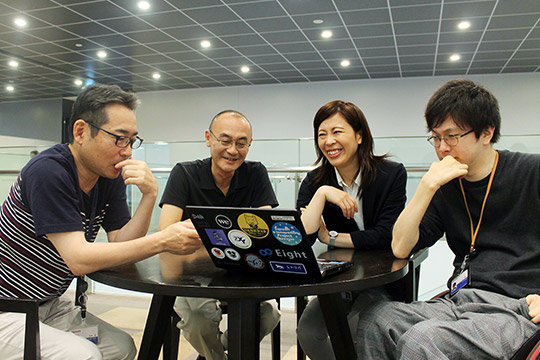
A quick meeting with the head of the Human Resource and General Affairs Department
The third measure we are testing is a unique one: It is "peer bonuses." The "peer bonus" originates in the USA.
For example, employees train the spotlight on people that do work that is essential but often goes unnoticed, such as providing support to other employees. They reward each other for their activities and contributions with points. We have introduced this system and are now trying it out.
Our objectives in introducing the peer bonus are two-fold: to spur awareness among employees about how their own work, speech and behavior contributes to those around them, and to foster a culture in which employees recognize each other (a culture of praise and a culture in which people can speak their minds). Gratitude is not only shared for work ; it can sometimes be shared for reasons that are unrelated to work.
These points are also the foundation of presenting incentives -- in this case, commendations. It is hoped that issuing commendations to people and groups that have been thanked by many people will invigorate mutual communication at the workplace level as the result of greater understanding of personalities and operation contents. Furthermore, we expect it to improve engagement with the company and motivation towards work.
 Implementing work style reform along the three axes of processes, technology, and culture
Implementing work style reform along the three axes of processes, technology, and culture
It is important that work style reform be advanced along the three axes of processes (system and function optimization), technology (environments in which operations can be performed anywhere, anytime, simply, and safely), and culture (culture and mentality transformation). The measures to promote telework from home or satellite offices are process-oriented measures. The introduction of IT tools such as RPA, the creation of mobile environments, and the securing of security are technology-oriented measures. The engagement surveys, 1-on-1 meetings, "Self-biz," and peer bonus initiatives are culture-oriented measures.
By engaging in activities along these three axes, we aim to create a more inviting and comfortable company.
Of course, these measures are just part of our work style transformation efforts. We will fully leverage the findings of our Work Style Reform Project and our Young Employee Task Force to develop and implement even more measures for creating future work styles, making our company one in which people with diverse backgrounds work happily and energetically while growing even more fond of the company, and one in which even more people want to work.
"Transforming from a working company to a company hoped to work for." Toshiba Digital Solutions will continue to close proximity to our each and every employee and envelope to reform our work styles.
- *
- The corporate names, organization names, job titles and other names and titles appearing in this article are those as of April 2020.
Related articles
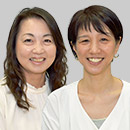
- June 26, 2020
- New Network SecurityEnsuring Security and Implementing Work Style Reform Using “Zero Trust Networks”
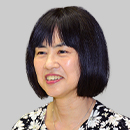
- July 9,2020
- Our Practice of Work Style Reform by ICTPromoting Operational Reform through the Introduction and Deployment of RPA
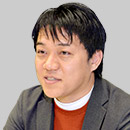
- July 9,2020
- Providing Useful, Convenient Functions from Users' Own SmartphonesGeneralist/PA, a New Form of Work Support for Employees



